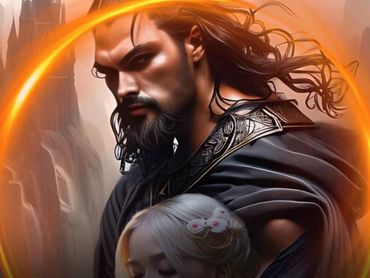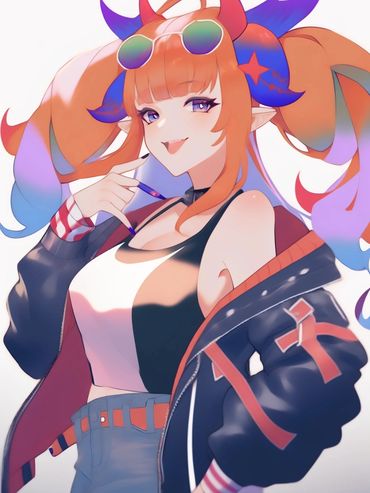A GUIDE TO SPOTTING AI-GENERATED IMAGES





Generative AI & Ethics Training
Golden presents a course on generative AI overview and ethics awareness training. The training focuses on the differences between AI powered tools and Generative AI software, ethical issues with AI, and how to identify AI portfolios and images. He discusses the potential benefits of using AI to increase productivity, reduce labor costs, and improve productivity, but also privacy concerns and potential harm such as job losses and reduced quality of work.

Generative artificial intelligence (AI) and machine learning (ML) have progressed rapidly since their public release in August 2022. Looking for weird, distorted body parts is no longer a reliable way to spot AI-generated images. Many of the latest AI-generated images are nearly indistinguishable from human-created art.
This page serves as a guide to help you determine whether someone is using AI to create their artwork, even if they claim they are not. While there are ethical concerns regarding the LAION data set used to train many diffusion model based AI/ML systems and copyright issues for end users, I can find some level of respect for those who declare that they have used AI/ML in their work. This transparency allows clients to make informed decisions about how they spend their money.
It’s important to note that this guide is intended for use when comparing against publicly available generative systems. Better models trained on specific data and used on private, open-source iterations of this technology may be more specialized, advanced, and realistic.
HoW TO IDentify An ai GRIFTER’S PORTFOLIO
When examining a potential AI grifter's portfolio, there are several signs that AI/ML has been used without declaration. Keep in mind: these signs may not always indicate that someone is a grifter using AI/ML without declaration. However, if you notice multiple occurrences of these things in a person's portfolio, it is certainly more likely that AI/ML is being used without declaration.
ACCOUNT IS NOT OLDER THAN 2022

The portfolio is an account created since August 2022, yet is filled with a large quantity of work.
A WAVE OF UPLOADS

There are frequent uploads of many images per day, every day, which is not possible for a traditional artist to produce. Many of these images will be very similar and look finished, as highlighted in the point before.
A PEEK BEHIND THE CURTAIN

If the image is photorealistic, looking at the metadata on their website will let you check on image creation dates, copyright, and/or camera settings. This only works if the metadata is not stripped (like it is when images are posted to Facebook, Instagram, etc).
A Quantum Leap in Quality

There is a sudden change in quality from stock photos or CG assets (from DAZ, etc) to high-concept illustrative art or fauxtography that makes it seem years of skills were obtained overnight.
A BEVY OF FINALIZED CONCEPTS

The portfolio contains highly detailed "concept" artwork that is clustered in groups, indicating that the person may be using AI to generate multiple versions of the same concept. This is a major tell for pages that share things like “stained glass bathtubs”, which all look very similar because they were generated quickly for engagement.
EVERYBODY GETS A STYLE!

The styles used in the artwork differ greatly across the entire portfolio, indicating that the grifter may be using AI/ML to replicate the styles of various artists to maximize exposure and possible sales. This is possible since it’s so easy to replicate via AI by simply saying “in the style of {a named artist}”.
THERE CAN BE ONLY ONE…
BLATANT Copyright Infringement
BLATANT Copyright Infringement

If there is a webpage selling products or a FB page with an ”amazing photo of ___” that look vaguely AI , a telltale sign is only having one image of each item. The most common generative AI systems cannot reproduce the exact same thing (especially complex items) from different angles or lighting conditions. However, this is rapidly changing and soon to be an obsolete metric.
BLATANT Copyright Infringement
BLATANT Copyright Infringement
BLATANT Copyright Infringement

This goes without saying.
Reminder - these signs may not always indicate that someone is a grifter using AI/ML without declaration, but if there are multiple occurrences it is likely that AI/ML is being used without declaration.
If you're uncertain, there is always the option to ask. Take note of the artist's willingness to respond. Dishonest AI grifters typically become defensive or decline to provide any evidence when questioned.
ONTO THE ARTWORK:
As generative software continues to evolve and specialize in artistic renders, synthetic photography, and simulated hand-drawn material, spotting signs of AI/ML use in artwork is becoming increasingly challenging.
However, there are still some clues to look out for. It's worth noting that Midjourney V5 is currently considered one of the most advanced generators that has "fixed" many of these issues, with earlier versions exhibiting more of the telltale signs listed below.
PROPORTIONS & Dynamics

In AI-generated art, figures tend to have exaggerated features such as musculature, buttocks, and bosoms. The skin is often very smooth with wrinkles being the only exception (those are usually overly defined). Women are mostly portrayed in a sexualized, anime-style manner rather than a more empowering one.
AI art also lacks any sense of cohesive action and is usually restricted to stiff, stylized poses from the front, side, or at a slight angle.
The Curse of the SAME FACE

Oftentimes, AI art will generate the same face, likely caused by its recurrence within the original data set.
Tone

Many AI images have an artificial sheen that gives them a surreal, almost “Hollywood” glamour. They could be considered “too perfect”.
Lack of order and precision

AI-generated art often lacks intent and purpose, with elements being placed randomly throughout the image without much precision.
Lack of full, continuous patterns

AI-generated patterns tend to be “chunky”, especially in fabrics, resulting in sections that do not bear repeating patterns well or segments where patterns rapidly change. This can also be seen in clothing where buttons suddenly melt into the fabric or other inconsistencies.
Lack of symmetry

AI often fails to achieve artistic precision with symmetrical elements, as seen in “themed” rooms or architectural renderings.
Lack of correct perspective

Architectural AI often lacks proper perspective, with windows not matching the perspective lines of walls, countertops not aligning, etc.
Lack of closed curves

AI-generated jewelry such as necklaces and bracelets may be lopsided or one-sided.
REFLECTIONS & LIGHT

AI artwork tends to have reflections and lighting that don't match the surroundings. Remember the process stabilizes noise and is not an actual ray-traced render.
STRANGE Tattoos
lorem ipsum and whatnot

AI generated tattoos are oftentimes imprecise, overly complicated “blobs”. Tribal artwork is often found due to its more simplistic form, though as previously mentioned AI has trouble with closed curves and patterns.
lorem ipsum and whatnot
lorem ipsum and whatnot
lorem ipsum and whatnot

AI cannot currently generate legible text, such as the patch on his arm.
Body horror
lorem ipsum and whatnot
lorem ipsum and whatnot

While this is becoming less common with each new iteration of generative software, hasty AI users may overlook disturbing and surreal elements in their images such as hands.

I hope this guide has helped identify potential AI/ML grifters. However, as AI technology advances, and as you’ve seen in some of my examples, it’s getting very hard to tell.
It's important to note that if someone declares their use of AI/ML, it's their choice, and if someone is willing to pay the same amount for an artwork generated in seconds versus one that took days to create, that's also their decision.
My goal with this guide is to provide a useful tool for those considering purchasing artwork from someone who has not declared their use of AI/ML or refuses to do so.
OTHER EXAMPLES OF AI-GENERATED IMAGES












Cookie Statement
This website uses cookies to function and to learn and track our website's performance. By continuing to use this site, you accept this policy as acceptable use of cookies. For more information consult this page's Privacy Statement.